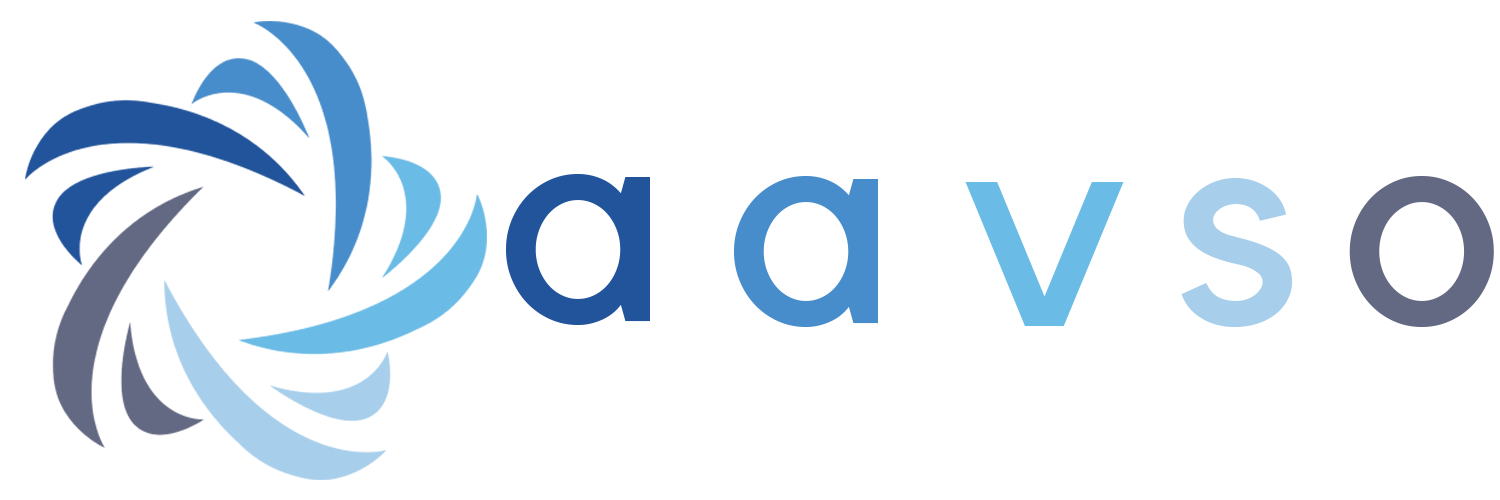Examples for Abstract Topics
The following is an example of how to include these elements if you have a scientific-based presentation abstract.
(The example is rewritten from a paper JAAVSO Editor-in-chief Nancy Morrison co-wrote as a graduate student.)
"Photometric Variability of the Wolf-Rayet Star CV Serpentis"
Wolf-Rayet stars represent a late, poorly understood stage in the evolution of massive stars. Study of the structure and variability in their envelopes may shed light on the physical processes that take place in their interiors.
The eclipsing binary CV Ser, which has a Wolf-Rayet primary, has shown remarkable changes in the amplitude of the light curve that could be caused by changes in the geometry of an atmospheric eclipse. This study aims to provide additional detail on these changes. In agreement with previous results, four-color (uvby) photometry in 1970 and 1971 reveals an eclipse at the predicted time with an amplitude of 0.16 mag in b but only 0.03 mag in u, v, and y. The larger amplitude in b is probably caused by the blend of C III lines at 4652 Å, which are formed high in the atmosphere. There is no evidence of a secondary minimum in any of the wavelength regions observed.
These results indicate that the light variations in this system have been stable since 1965. Further photometric monitoring would help elucidate the nature of the variability in the envelopes of Wolf-Rayet stars.
The following are examples of these elements in your history- or education-based presentation abstract.
Please note the difference between Example A and Example B, with Example A the preferred method (flow) for an abstract submission.
Example A (preferred):
(This example is from https://app.aavso.org/jaavso/article/3346/) *
Research experience is crucial in enabling students to progress to the next stage in their careers as science students or scholars. We hypothesized that semester-long, hands-on, astronomy research experiences for students of all ages can result in their publishing peer-reviewed papers.
We developed a hybrid course in astronomy and double-star observing that simultaneously supports classroom instruction at a variety of schools in our local area, at a university, and for adult learners. Topics of instruction include Kepler’s Laws, basic astrometry, properties of light, CCD imaging, how to perform research, scientific writing, and proposal preparation. Volunteer instructors were trained by taking the course and producing their own research papers.
Supporting tools are provided by a server and other online services. The server-based tools range from Microsoft Office and planetarium software to top-notch imaging programs and computational software for data reduction for each student team. Observations are performed by robotic telescopes worldwide supported by this program.
About fifteen papers have been produced, twelve of them from schools. Most have been accepted by the Journal of Double Star Observations (JDSO); the remainder are in review or in preparation. Three college professors and five advanced amateur astronomers have qualified as volunteer instructors. Since the beginning of the program, student demand has increased significantly. The program provides a significant opportunity for schools, teachers, and advanced amateur astronomers to introduce high school and college astronomy content.
* Adapted from "A Community-Centered Astronomy Research Program" (Abstract)
JAAVSO Volume 45 number 2 (2017)
Pat Boyce
Boyce Research Initiatives and Education Foundation
3540 Carleton Street, San Diego, CA 92016
pat@boyce-astro.org
Grady Boyce grady@boyce-astro.org
Example B (how NOT to format):
Motivation: Research experience is crucial in enabling students to progress to the next stage in their careers as science students or scholars.
Problem statement: Semester-long, hands-on, astronomy research experiences for students of all ages can result in their publishing peer-reviewed papers.
Methods: We developed a hybrid course in astronomy and double-star observing that simultaneously supports classroom instruction at a variety of schools in our local area, at a university, and for several adult learners. Topics of instruction include Kepler’s Laws, basic astrometry, properties of light, CCD imaging, how to perform research, scientific writing, and proposal preparation. Volunteer instructors were trained by taking the course and producing their own research papers. Supporting tools are provided by a server and other online services. The server-based tools range from Microsoft Office and planetarium software to top-notch imaging programs and computational software for data reduction for each student team. Observations are performed by robotic telescopes worldwide supported by this program.
Results: About fifteen papers have been produced, twelve of them from schools. Most have been accepted by the Journal of Double Star Observations (JDSO); the remainder are in review or in preparation. Three college professors and five advanced amateur astronomers have qualified as volunteer instructors. Since the beginning of the program, student demand has increased significantly. Many of the graduates of the first course have wanted to expand their astronomy knowledge and experience.
Significance: The program provides a significant opportunity for schools, teachers, and advanced amateur astronomers to introduce high school- and college-level astronomy content.
Examples A & B were formatted from the original text:
“The Boyce Research Initiatives and Education Foundation (BRIEF) is providing semester-long, hands-on, astronomy research experiences for students of all ages that results in their publishing peer-reviewed papers. The course in astronomy and double star research has evolved from a face-to-face learning experience with two instructors to an online hybrid course that simultaneously supports classroom instruction at a variety of schools in the San Diego area. Currently, there are over 65 students enrolled in three community colleges, seven high schools, and one university as well as individual adult learners. Instructional experience, courseware, and supporting systems were developed and refined through experience gained in classroom settings from 2014 through 2016. Topics of instruction include Kepler’s Laws, basic astrometry, properties of light, CCD imaging, use of filters for varying stellar spectral types, and how to perform research, scientific writing, and proposal preparation. Volunteer instructors were trained by taking the course and producing their own research papers. An expanded program was launched in the fall semester of 2016. Twelve papers from seven schools were produced; eight have been accepted for publication by the Journal of Double Star Observations (JDSO) and the remainder are in peer review. Three additional papers have been accepted by the JDSO and two more are in process papers. Three college professors and five advanced amateur astronomers are now qualified volunteer instructors. Supporting tools are provided by a BRIEF server and other online services. The server-based tools range from Microsoft Office and planetarium software to top-notch imaging programs and computational software for data reduction for each student team. Observations are performed by robotic telescopes worldwide supported by BRIEF. With this success, student demand has increased significantly. Many of the graduates of the first semester course wanted to expand their astronomy knowledge and experience. To answer this demand, BRIEF is developing additional astronomy research courses with partners in advanced astrometry, photometry, and exoplanets. The program provides a significant opportunity for schools, teachers, and advanced amateur astronomers to introduce high school and college…”

